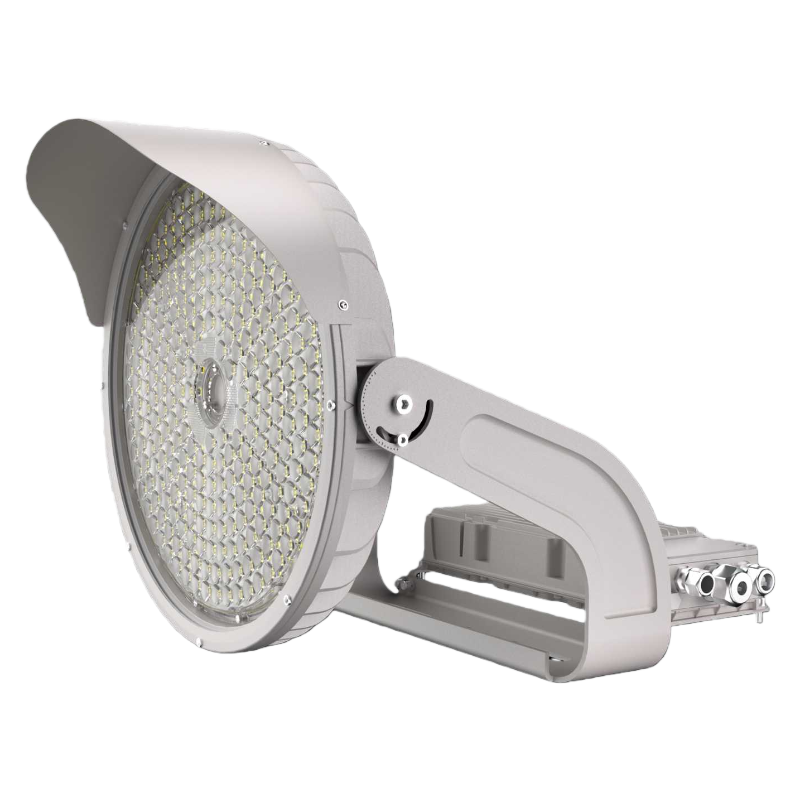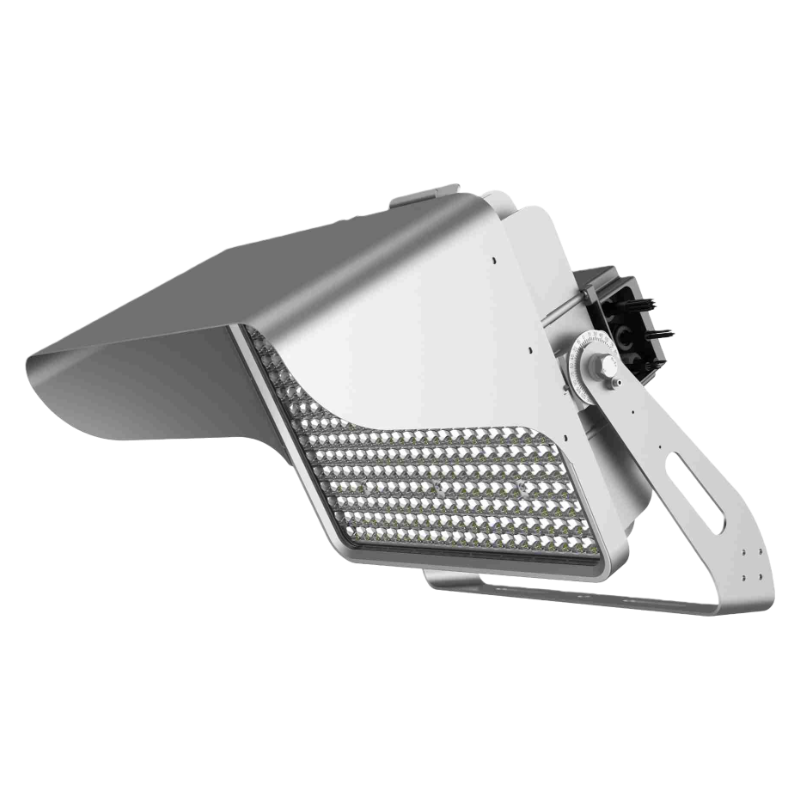What is Wall Pack Lighting?
What is Wall Pack Lighting?
LED Wall pack lights or building exterior lights refer to outdoor lighting that is usually installed on the exterior walls of a building. This type of outdoor lighting is often used to illuminate ground-level areas that are frequented by vehicles and pedestrians. They can also provide additional security for property owners. It is not uncommon to have multiple light fixtures installed on a building or wall, with the fixtures spaced to provide even lighting around the ground level. This makes it easier to see the perimeter of the building. Wall lights can also be used to highlight features on exterior walls or add decorative lighting to the exterior.
In addition to their functional benefits, wall lights can also help enhance a property's curb appeal. When choosing a wall light, it is important to consider the size, wattage, and beam angle of the fixture.
LED wall lights are 14-inch wide x 10-inch high metal outdoor lighting fixtures designed to be mounted on commercial building exteriors. These lights play an important role in outdoor lighting and are suitable for areas such as parking lots, sidewalks, and entrances. Their main uses include providing visibility for vehicle and pedestrian traffic, enhancing security around the perimeter of a building, and ensuring that entrances are well-lit. They are ideal for parking lots, sidewalks, entrances, exits, and other places where nighttime visibility and safety are important.
LED wall lights are a type of outdoor lighting fixture that is installed on the exterior walls of buildings. They provide lighting for parking lots, pathways, roads, and sidewalks. LED wall lights offer many advantages over traditional lighting, such as energy efficiency, durability, and versatility. However, to choose the best LED wall light for your needs, you need to consider some parameters, such as:
1. Look at the Lumens
Lumens is a unit that measures the amount of light emitted by a bulb. The higher the lumen, the brighter the light. When buying an LED wall light, you need to choose the right lumen rating for maximum efficiency and proper performance. Lumen ratings depend on the size, layout, and purpose of the parking lot. For example, a commercial parking lot may require more lumens than a residential parking lot for safety. According to the Illuminating Engineering Society (IES), the recommended lumen range for parking lots is 0.2 to 10 lumens per square foot.
Why LED Lumens are More Important than LED Watts?
Lumens tell you the amount of visible light a bulb or fixture produces. An LED bulb, or any bulb for that matter, that emits more lumens appears brighter than one that generates fewer lumens.And, unlike watts, you can compare lumens across different products. With LED, it is well known you need fewer lumens than other light sources because:
- LED light is directional.
- LED light is of higher quality.
- LED light degrades a lot slower than traditional light sources.

2. Use motion sensors to turn lights on or off when motion is detected.
Motion sensors are often overlooked in commercial lighting because facility managers can turn lights on or off when they leave.
But they don’t have to. Switching to LED lighting is a great way to reduce energy costs, and motion sensors are an easy way to achieve even greater savings. However, not all types of lighting are suitable for motion sensors. Fortunately, LEDs are.
- LEDs turn on and off instantly. Unlike other types of lights, there is no “warm-up” time required to reach full brightness. It works perfectly with motion sensors.
- LEDs are dimmable. So you can choose to dim or turn the lights off completely.
- Do you need the lights to be on 100% at 3 a.m.?
- Here’s a picture of an LED wall light fixture that has a motion sensor installed;

3.Color Temperature Options
Color temperature is a measure of the warmth or coolness of light, expressed in Kelvin (K). The lower the Kelvin value, the warmer and more yellow the light is; the higher the Kelvin value, the cooler and more blue the light is. Color temperature affects the ambience, visibility, and appearance of your parking lot. For example, warm white light (2700K to 3000K) can create a cozy, warm atmosphere, while cool white light (5000K to 6500K) can enhance the clarity and contrast of objects. Wall sconces typically have a color temperature of 5,000K, a cool white hue that is suitable for most outdoor applications.
4. Housing color:
The housing color is the color of the material covering the LED wall sconce fixture. Housing color can affect the durability and appearance of a wall sconce fixture. For example, dark housing colors absorb more heat and shorten the life of the LED, while light housing colors reflect more light and increase the brightness of the LED. Housing color can also match or contrast with the color of the building's walls. For example, brown or black housing colors can blend well with brick or stone walls, while white or silver housing colors can stand out against concrete or metal walls. Wall sconce fixtures are typically made of die-cast aluminum housings, which are corrosion-resistant, dust-proof, and tamper-resistant.
5. Light Quality (CRI) and How It Relates to Outdoor Lighting
We also mentioned that LEDs have a higher CRI than other bulbs. So what is CRI? The Color Rendering Index is a measure of how well a light source displays the color of an object compared to sunlight (an ideal light source).
When it comes to HID lamps, there is one thing people complain about the most: poor light color. While we consider short life and rapid lumen output decay to be their biggest challenges, the most obvious is poor light color quality.
Light color is important in all applications, especially outdoor ones. It has a significant impact on contrast and clarity, which are important for safety and security purposes. Most of the Wall Pack fixtures we offer have a CRI between 70 and 85, but we can customize almost any CRI you may need.
6. Make sure the wall pack has a moisture rating
Wall lights are not designed to be installed indoors. If you are looking for large indoor lighting for a commercial facility, we recommend high bay lights or shop lights. However, if you are looking for outdoor lighting, they are a good choice.
Like any type of outdoor lighting, they need to withstand all kinds of weather. This includes exposure to rain, snow, sleet, and hail. The lighting components within the fixture may not work if exposed to moisture, so they need to be moisture-proof.
The moisture rating can be found by looking at the IP rating on the product's spec sheet. Make sure it is rated from IP65 to IP68. IP65 is enough for normal weather conditions, but IP68 lights can be fully submerged in water.
7. Luminous Efficacy (Lumens/Watt)
Luminous efficacy is a measure of the efficiency of a light bulb. It specifies the number of lumens produced per watt of electricity consumed. LEDs are much more efficient than traditional bulbs and produce higher luminous efficacy. Although, in general, high-quality LEDs have high-efficiency ratings. Higher efficiency ratings are also one of the reasons why wattage is not the best way to evaluate LED lights when comparing them to other types of bulbs.
Although more efficient LEDs are more expensive at first, they are also more efficient than other LEDs (much more efficient than other types of lighting). And, because of the higher efficiency, you will see greater savings on energy costs. So, despite the slightly higher initial investment, you can recoup your costs aster.
8.Light Quality (CRI) and How It Relates to Outdoor Lighting
We also mentioned that LEDs have a higher CRI than other bulbs. So what is CRI? The Color Rendering Index is a measure of how well a light source displays the color of objects compared to sunlight (an ideal light source).
When it comes to HID lamps, there is one thing people complain about the most: poor light color. While we consider short life and rapid lumen output decay to be their biggest challenges, the most obvious is poor light color quality.
Light color is important in all applications, especially outdoor ones. It has a significant impact on contrast and clarity, which are important for safety and security purposes. Most of the Wall Pack fixtures we offer have a CRI between 70 and 85, but we can customize almost any CRI you may need.
9.Motion Sensor
A motion sensor is a device that can detect motion and turn the LED wall light fixture on or off accordingly. Motion sensors can help save energy and enhance the security of your parking lot. Motion sensors can turn the LED wall light fixture on when someone or something passes by, and turn it off when no motion is detected. This can reduce the power consumption and light pollution of the LED wall light fixture. Motion sensors can also deter intruders or criminals from entering your parking lot because they can trigger the LED wall light fixture and alert the occupants or authorities. Motion sensors can be integrated with the LED wall light fixture or installed separately.
Why are wall packs so popular?
Wall sconces are a type of outdoor lighting fixture that is installed on the exterior walls of buildings. They provide lighting for parking lots, pathways, roads, and sidewalks. Wall sconces are popular for several reasons, such as:
•Easy installation: Most commercial buildings are designed to accommodate exterior lighting using junction boxes. This means that wall sconces can be easily installed on existing wiring and fixtures without additional expense or modifications. Wall sconces also feature a simple three-wire connection that can be accessed by simply opening the compartment. Most wall sconces have hinged openings for easy access to bulbs, ballasts, or accessories. This makes them a favorite fixture for electricians.
• Durability and appearance: Wall sconces are made of sturdy materials that can withstand harsh weather conditions and vandalism. They also come in a variety of styles and sizes to match the architectural design of a building. Wall sconces can feature glass or acrylic lenses, depending on the user's preference and budget. Some users prefer glass lenses because they offer better light quality and appearance.
• Energy efficiency and versatility: Wall sconces can use LEDs, which saves energy and reduces maintenance costs. LED wall sconces, in particular, can last up to 100,000 hours and emit bright, even light. Wall lights can also be equipped with accessories such as motion sensors, backup batteries, and photocells to enhance their functionality and performance. These accessories can help control light output, detect motion, and provide backup power in the event of a power outage.
Wall lights are a popular choice for outdoor lighting because they are easy to install, durable and beautiful, energy-efficient, and versatile. They can provide ample and comfortable lighting for a variety of applications, such as security, safety, and ambiance. Wall lights can also be customized to suit the user's specific needs and preferences.












